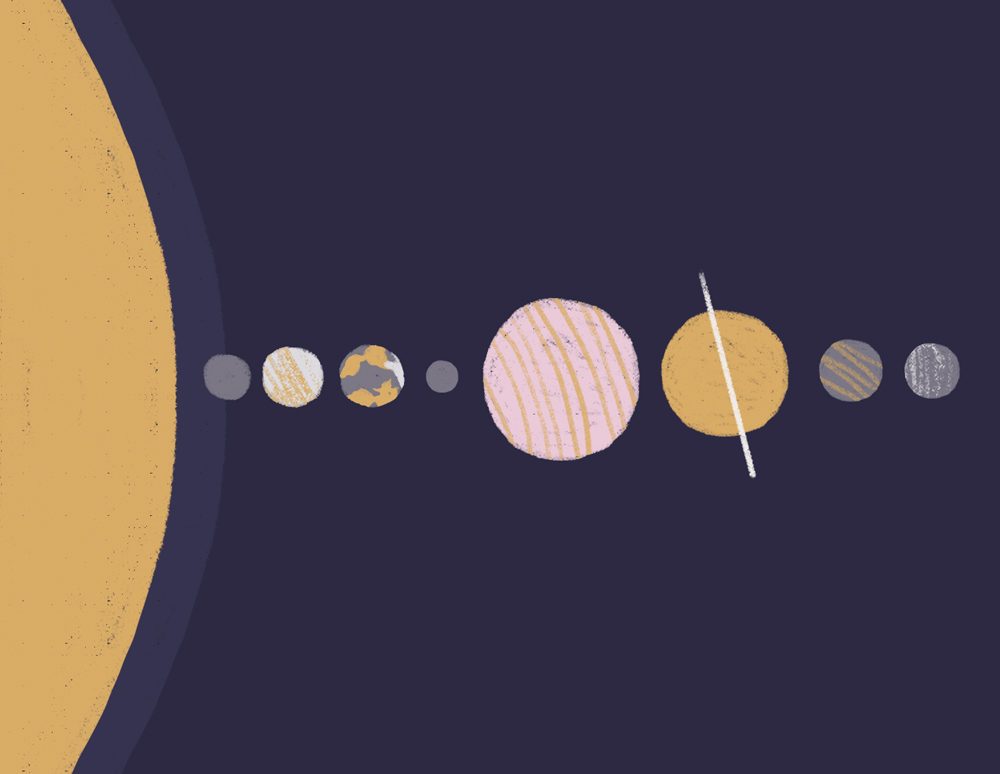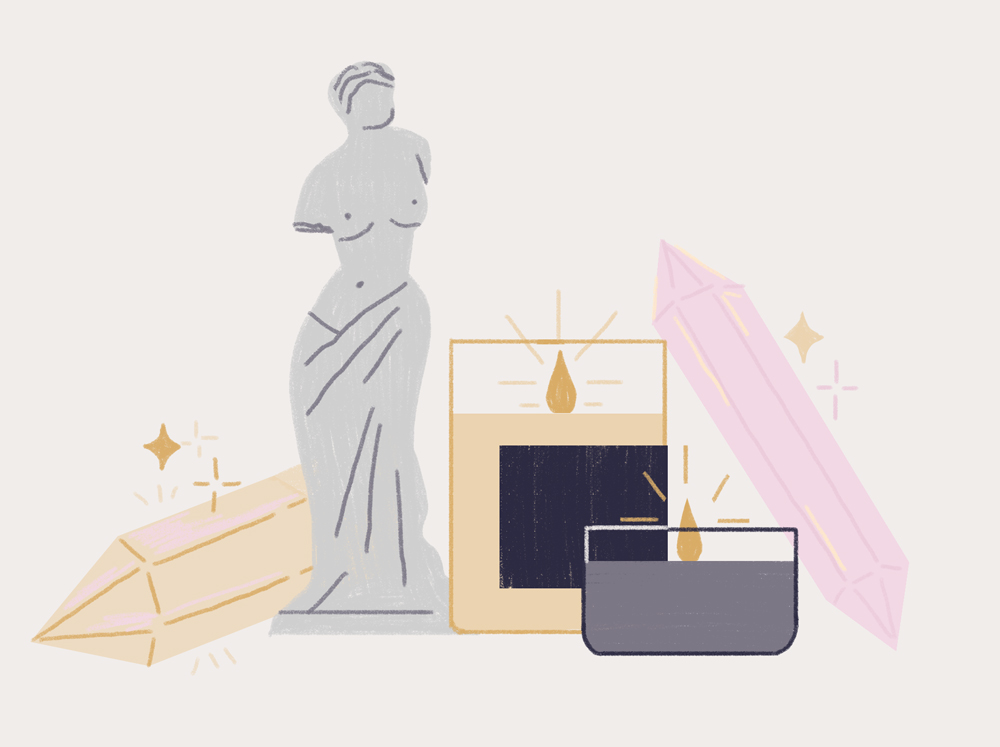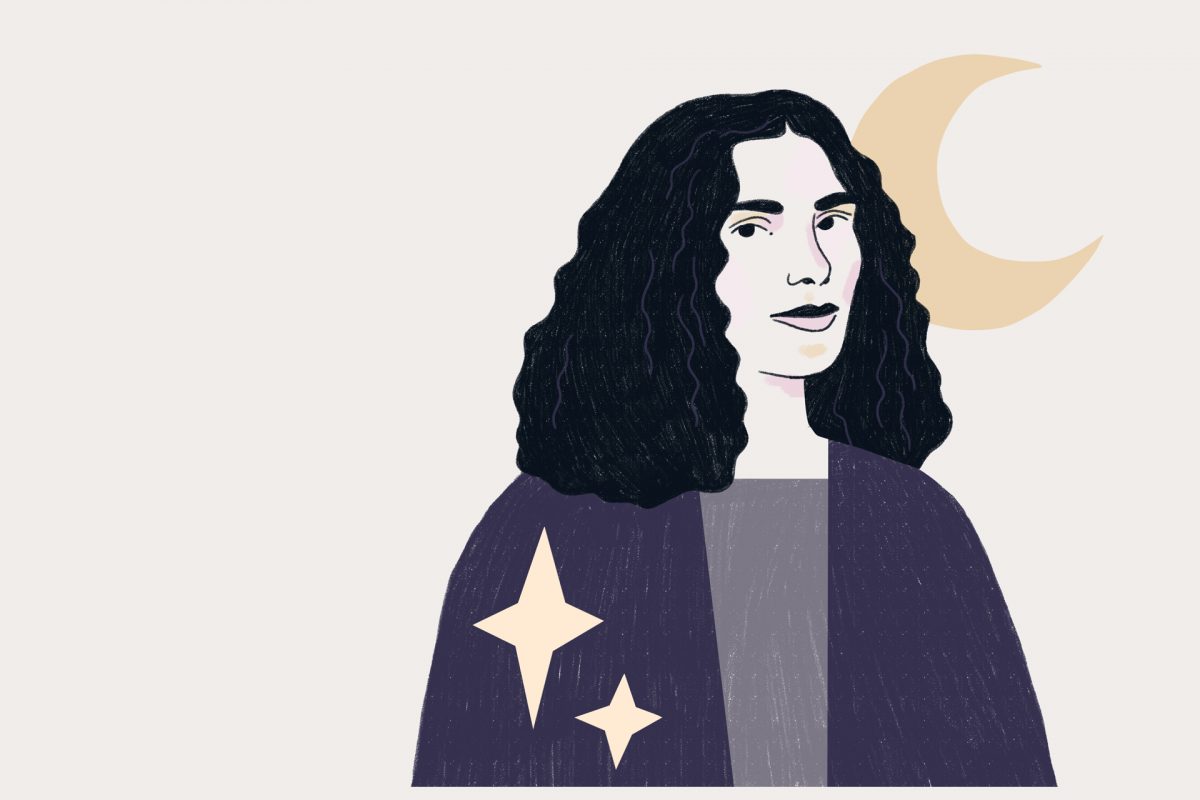With a massive and devoted online following, Chani Nicholas is often referred to as the “Internet’s favorite astrologer.” But Chani has been reading charts for more than 20 years, connecting the dots between people’s planetary placements long before Instagram. Her New York Times bestselling book, “You Were Born For This: Astrology for Radical Self-Acceptance,” is a guide to understanding your birth chart, working in concert with the horoscopes she shares with over one million monthly readers each new and full moon. Along with online workshops and courses, she creates cosmic playlists for Spotify – astrological soundtracks for the month ahead.
Chani’s path to astrology has not been a straight line – but it’s been a constant in her life. In a childhood whipsawed by addiction and abandonment, astrology was a lifeline. Her first readings – a cursory analysis at age eight and an in-depth dive into her natal chart at 12 – gave her the experience of feeling seen for the first time. Astrology tugged at Chani for years, but it took decades before she committed to it in full. She waitressed, tried out acting, taught yoga and dropped out of three master’s programs before writing the nuanced, socially-conscious horoscopes that finally aligned her energy with her purpose.
We spoke with Chani about joy, the teachings of the moon and how astrology can be a tool for tidying. Our conversation took place on the first full moon of the COVID-19 quarantine, where she was sheltering in place with her wife in Los Angeles.
“Radical self-acceptance can sound very charged, but, at its heart, it’s about a softening. Radical self-acceptance is just letting ourselves know it's okay to be who we are.”
We’re in a time of heightened anxiety and uncertainty. How can astrology help us through this moment – and others like it?
Astrology teaches us about cycles, rhythms and patterns. It teaches us that there is a beginning, a middle and an end to things; it reminds us that we’re in a moment – whether glorious or horrific – and that it will change. We can’t be attached to any of it, but we can be in relationship with all of it.
When we look at the present moment with a broad worldview – and put it in the context of past decades and centuries – we can see the astrological patterns that emerge and understand which ones, historically, correlate with difficult times in history. It can be alarming to look at these hard moments before we’ve arrived at one of our own – but they can be oddly comforting to dive into once we’re in it.
Looking at the world through an astrological lens helps us to understand that this moment is not going to go on forever – and that it’s also not happening in a silo. It’s connected to the unfolding of everything else.
When we arrive at a crisis point, all of the things that keep us in alignment when life is ”normal” need to be called to the fore. That’s when our spiritual practices and ways of taking care of ourselves either really come through for us or show us that they don’t actually work that well.

What’s going on in the cosmos right now? Can you provide a framework that can help us make sense of this present moment?
In January, after two eclipses, we had the conjunction of Saturn and Pluto, which happens about every 36 years. Pluto is the planet of the underworld, and it magnifies the significance of any planet it comes up against. Saturn is a planet of austerity and discipline – and of structure and form. It’s also about isolation and quarantine. Saturn matures us. Saturn asks us to get real. Saturn says stop, you’re going the wrong way – this path doesn’t actually bring long-term satisfaction.
When you look back in history at the conjunctions of these two planets, the last time it occurred was in the early ‘80s, when the AIDS epidemic was at a heightened state. And if we look way, way back to the 1300s, a Saturn-Pluto conjunction aligned perfectly with the bubonic plague.
Those two are making a conjunction with Capricorn right now. Capricorn is generally associated with the material – it speaks to a great restriction financially. But it’s not the only thing that’s happening: Jupiter’s also in Capricorn, also making a conjunction with Pluto. The last time they were both in Pluto was in 2008. They didn’t make an exact conjunction, but they got very close to each other, and that was the last time we had a big financial collapse.
So much is happening in this moment, but when we strip it all away – when we only have the necessities – we get to really understand what matters. Since the restrictive principles of Saturn were heightened from the beginning, we know that we’re in a time of having to eliminate and of having to pull back.
Recently on Instagram you shared the following: “Having this concentration of time with ourselves makes us more intimately aware of what is always awaiting us just below the business of life.” What’s your advice for someone preparing to go deep within?
What’s powerful about this moment is that we’ve all gone within. We’re not all having the same experience, but we are all in the same collective moment. Going within feels much bigger – and it’s amplified because we don’t know when this condition is going to lift.
As for advice, it depends on the resources someone has both externally and internally. Having access to things like therapy and healing practices is a tremendous privilege – and having time to engage with them is another. At this point in my life I feel quite resourced internally, and I still struggle with the feelings that come up day to day.
I would say to reach out to all the resources that are available to you. Do whatever feels comforting in the moment – however you can come back to your breath and stay with the day. Try not to go anywhere or take on more than just this day.
“No one else can be my source of joy – I have to have that internally. ”
Tidying is about confronting your life. In its own way, it’s a practice of radical self-acceptance. Tell me about that phrase – what does it mean to you, and why is it important?
Radical self-acceptance can sound very charged and very energetic. But, at its heart, it’s about a softening.
Human beings project so much onto each other. When we see somebody’s success – in any realm of life – we want what they have. A lot of us think that we need to become that person – or mold ourselves into something that we’re not – in order to get the kind of accolades our ego often craves and that the systems we’re in have set us up to want. Knowing one’s own desires is really like a lifelong unraveling of the impact of those systems on our psyche.
If astrology speaks to you, your chart can be a shortcut to those unique desires. It says what it says. It’s a message just to me – non-negotiable. These are the qualities. This is what was present at the moment of your birth. This is how it can manifest.
What I’ve seen from giving readings over the years is that what the chart says is what the soul wants. Once we accept what our talents and our desires are – and where our curiosity and the energy is – and we give ourselves permission to go there, a lot of things just naturally fall into place. We can flow with our life.
There’s a theme in our lives that usually begins at the very early stages, and we can see little breadcrumbs of it throughout the years. We might try to do other things outside of it, but generally that’s where we keep coming back – to the place where the energy is and where meaning comes from.
When you recognize that, there can be a relaxation within yourself and with the way life is going. Radical self-acceptance is just letting ourselves know it’s okay to be who we are.
This epigraph is front and center on your website: “Life is so much shorter than we think. Make your art. Take care of each other. Risk everything for joy.” What is your relationship to joy?
My relationship with joy is one that has had to be – and continues to have to be – learned. I’m not somebody who naturally lives in a place that’s exuberantly joyful. My wife, Sonya, is somebody who lives there, and I have friends that do, as well; being with people like that is a great blessing.
For me, joy comes from feeling connected to myself in the moment. I get a lot of joy out of understanding my inner life and how it’s connected to my outer experience. Receiving affirmations that I’m connected – through my dreams and listening to my intuition – is where I get the most joy. Being connected to people is incredibly joyful. I find joy in my marriage and being with my wife, but no one else can be my source of joy – I have to have that internally.

Your astrology is centered on the moon. What drew you to the moon initially? How has your relationship with it changed over time?
Our connection to the moon is ancient. It’s our local planet – our closest friend and one of our first teachers. It has always been there with us, helping us to evolve and teaching us about the cycle of life and death and rebirth. Teaching us that it’s okay to shed and release, to go dark, to build and shine and bloom.
The moon signifies the body and our relationship to our daily life. We manifest our big spiritual purpose through the daily grunt work of life – sleeping and flossing and feeding the baby and being sick…it’s a daily rhythm, and the moon teaches us that the way to live out an entire year is bit by bit, 28 days by 28 days.
We need ritual, and the moon offers us a chance to pause and reset. When it goes dark, when it’s full, when it’s building back up again – these are all opportunities for us to take notice and create small rituals in our daily lives.
I think of new moons as mini tidying festivals – they’re a really good time to empty out the clutter of the mind. The new moon happens in a different part of our chart each month, so you can look at your intention for that part of your life. Each new moon will take you around the wheel of your chart, so by the end of the year you’ve gone through the whole thing – and then you get to start again. There’s a feeling of cleansing and refreshing with each new moon.
“I think of new moons as mini tidying festivals – they're a really good time to empty out the clutter of the mind.”
Before embarking on a tidying festival, individuals must first imagine their ideal lifestyle. Can astrology be a tool in that sort of envisioning?
When you’re thinking about your life at the beginning of a tidying festival, astrology can help to remind you of how you function best – of what you need to thrive.
If, for example, you’ve got a lot of cardinal signs in your chart, initiation is going to be really important for you – starting things and having bursts of energy will keep you motivated and moving forward. Astrology can help you to honor the essential nature of what you need in each area of your life without feeling bad about it.
When it comes to visualizing a home space that supports your highest self, look at what your chart says is really essential for you at home. For both me and my wife, Venus plays a big part in our charts when it comes to our homes. Without really realizing it, we’ve created a home that’s very Venusian – we have a garden, and an altar with five goddesses on it – and when I look at our house, I see Venus everywhere. It’s up to each individual how they’ll interpret their charts, but it’s about honoring the placements of what’s there.
“Once we accept what our talents and our desires are and give ourselves permission to go there, a lot of things just naturally fall into place. We can flow with our life. ”
What rituals do you turn to – in times of crisis and on a daily basis?
Having rituals that are little and manageable is important for me – something that can be very easily integrated into the beginning of my day.
We have an altar in the kitchen and every morning, before I do anything else, I come downstairs and get a glass of water. And then I light candles, burn some frankincense, and have a moment of prayer or meditation. And then I pull three tarot cards and reflect on them.
Since the altar is in the kitchen, we pass it many times a day. It reminds me of my relationship with my innermost self, and that I have a place to check in with her.

The KonMari Method™ encourages people to ask the question, “Does it spark joy?” when evaluating all aspects of their lives. Is there a question or concept that you apply in making important decisions?
Yes. I have a few versions of that question:
Is this something I’ve been feeling internally that has now shown up as an external reality? Is it in accordance with my intention for my work? How does this line up with everything else I’ve created?
I know it’s the right thing when I get the right signs. That can happen in an instant, or sometimes I have to dream about it and talk it over with my wife – we’ll look at the signs that led up to it and ask what they signify.
In my experience of my own life – and watching everybody else – when it’s the right thing, it’s almost like it existed there before. Once it arrives, everything else can start to move in and flow. It creates more for every other aspect of my life.
And if it doesn’t do that, then it’s not worth it.




